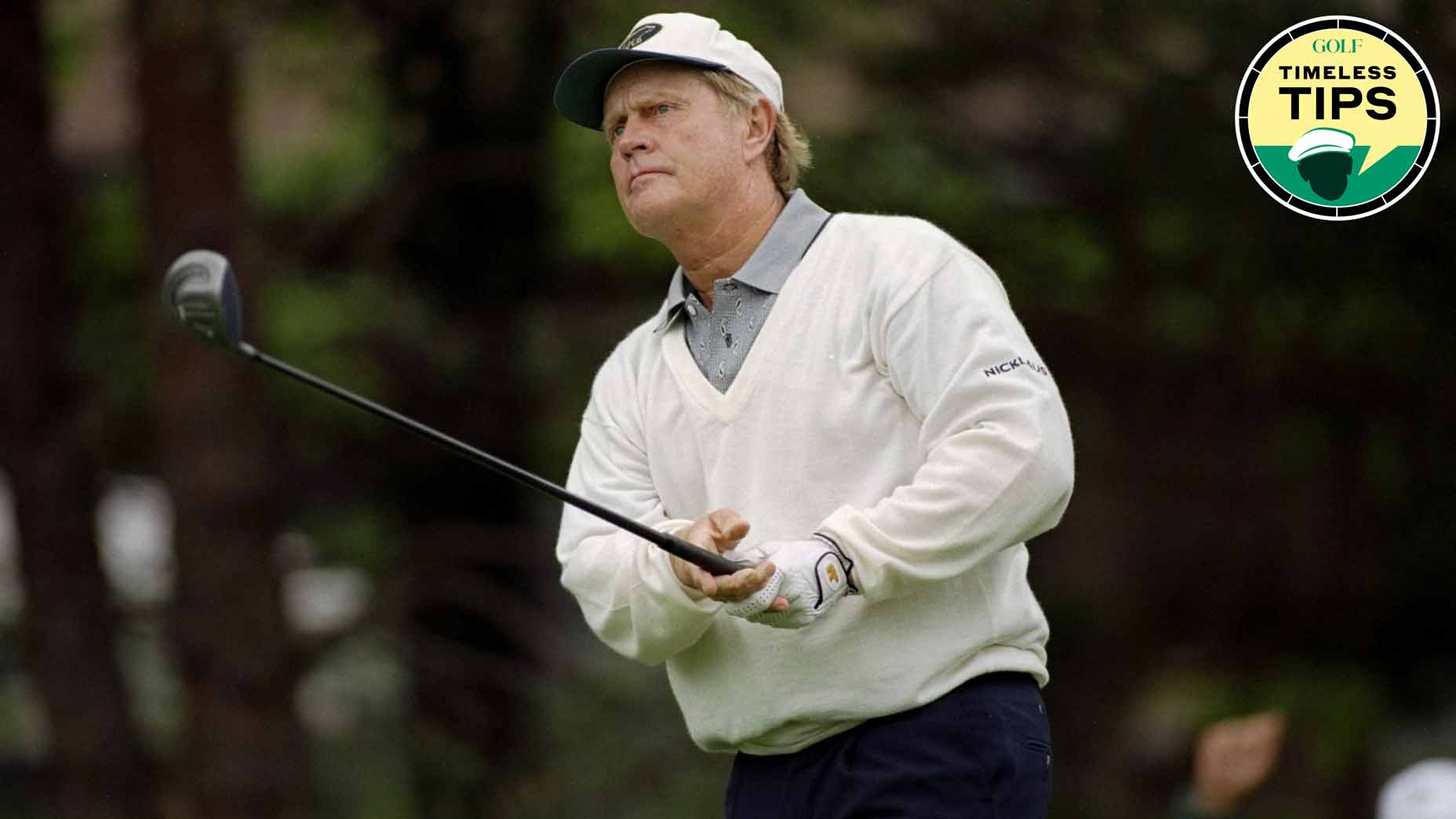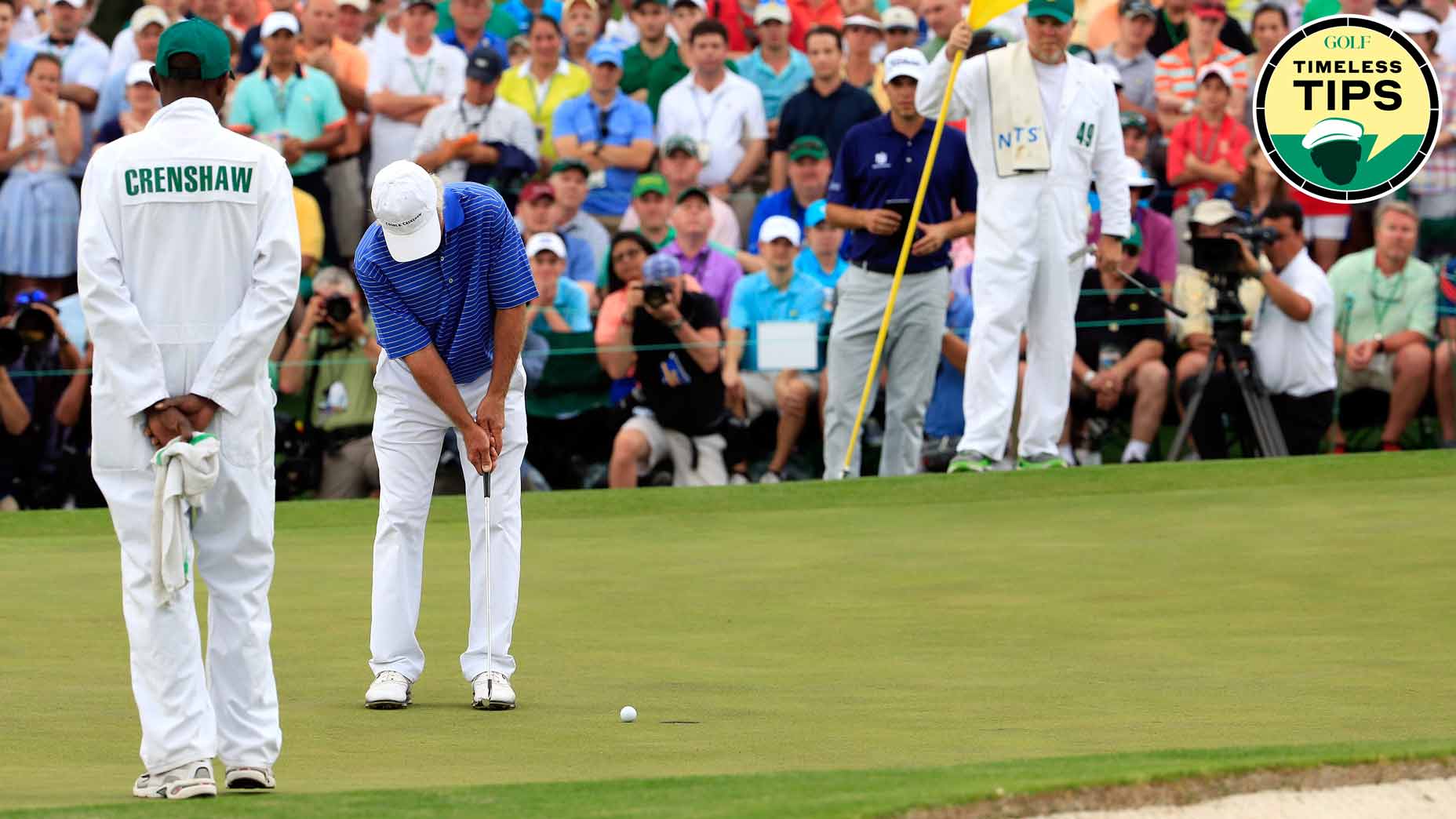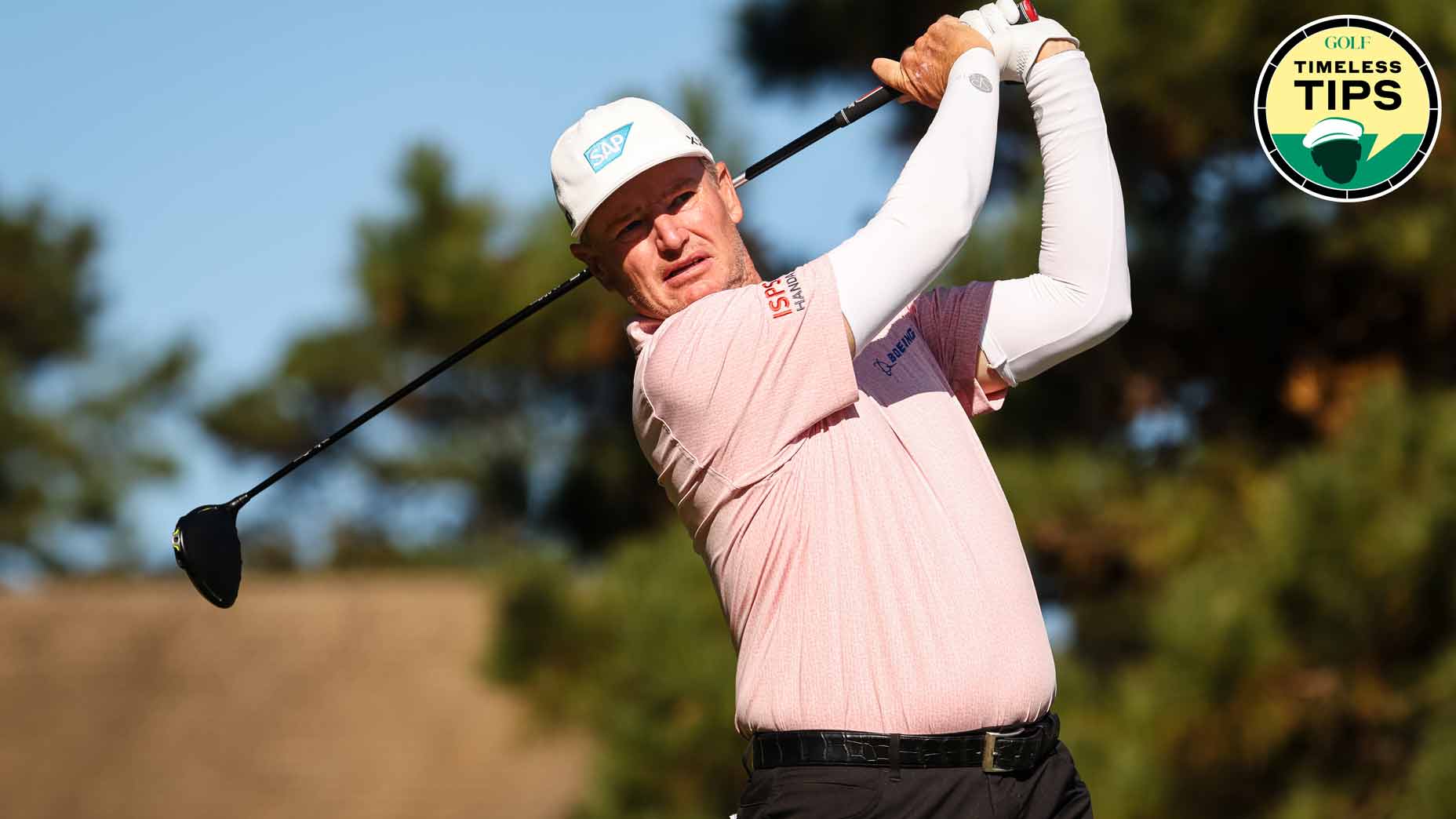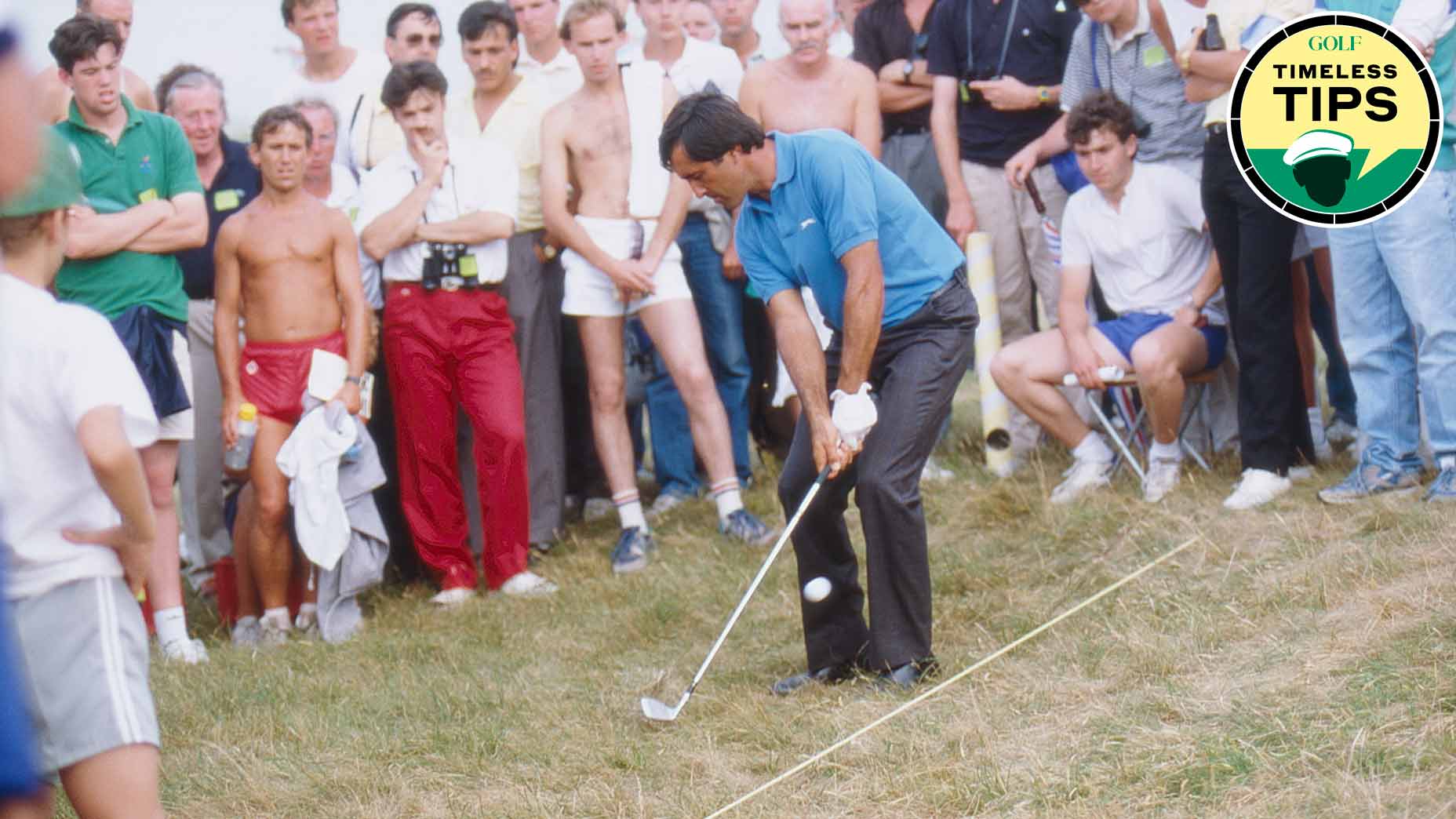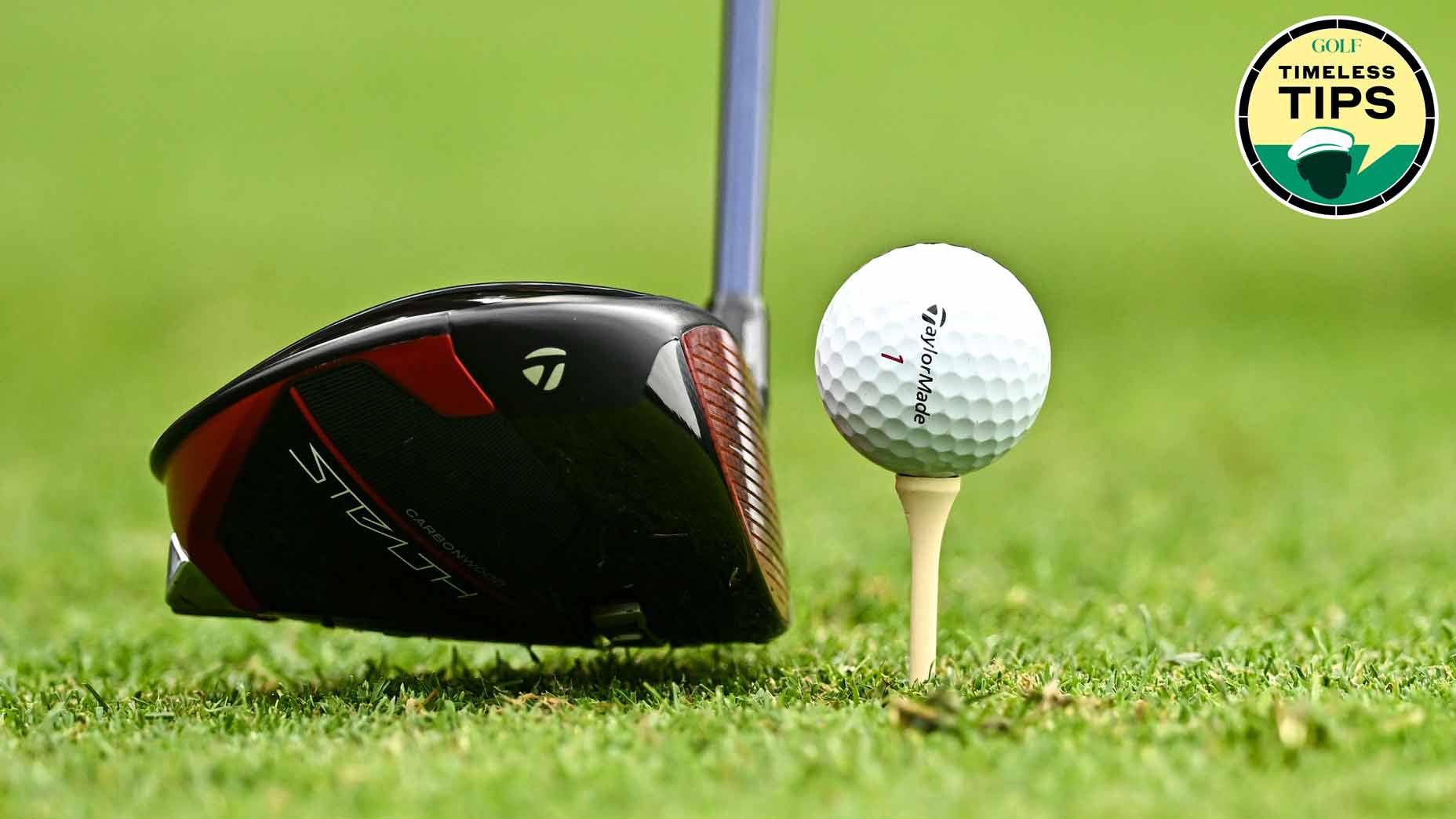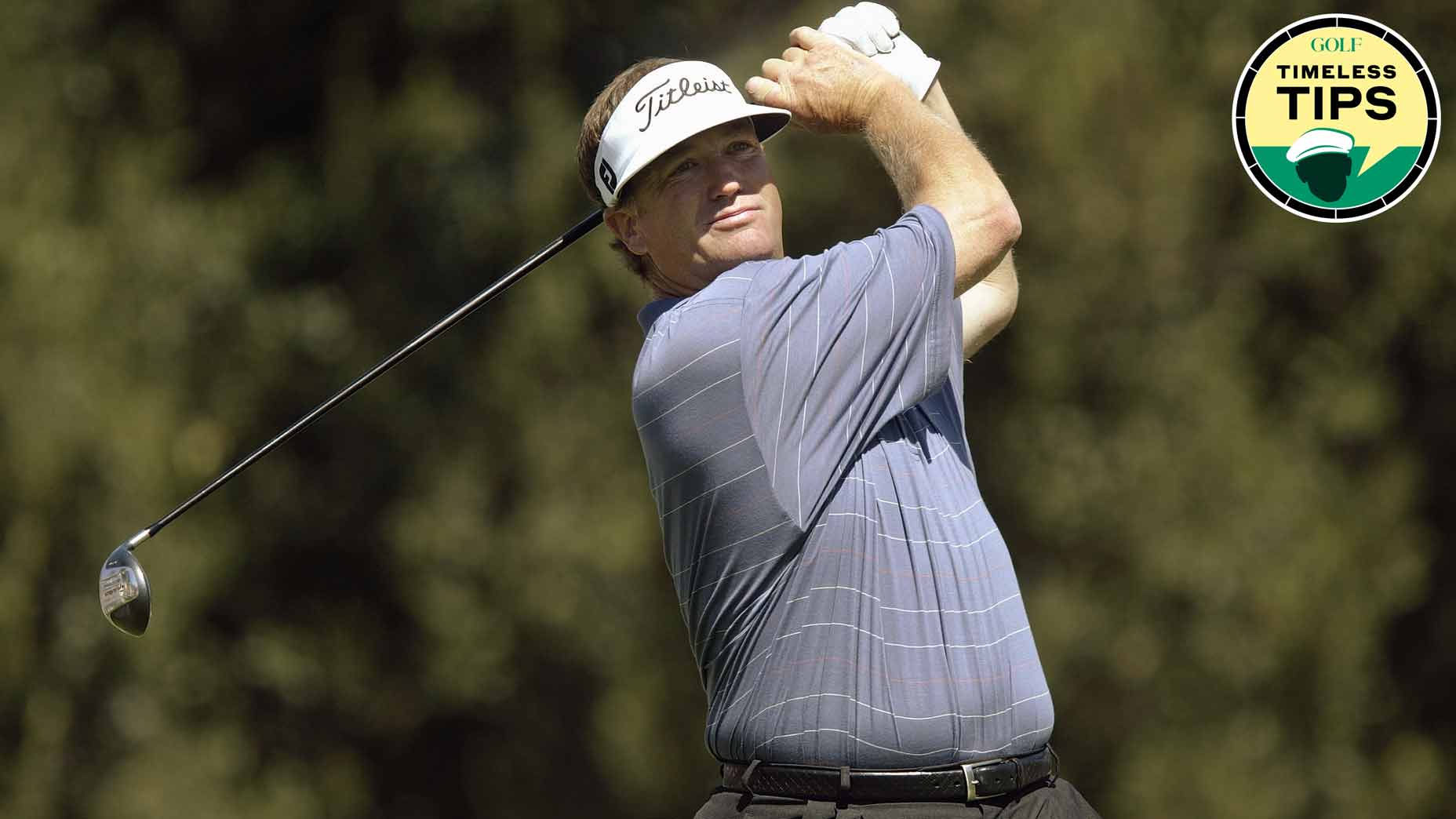4 ways to lower your handicap fast, according to a top teacher
- Share on Facebook
- Share on Twitter
- Share by Email
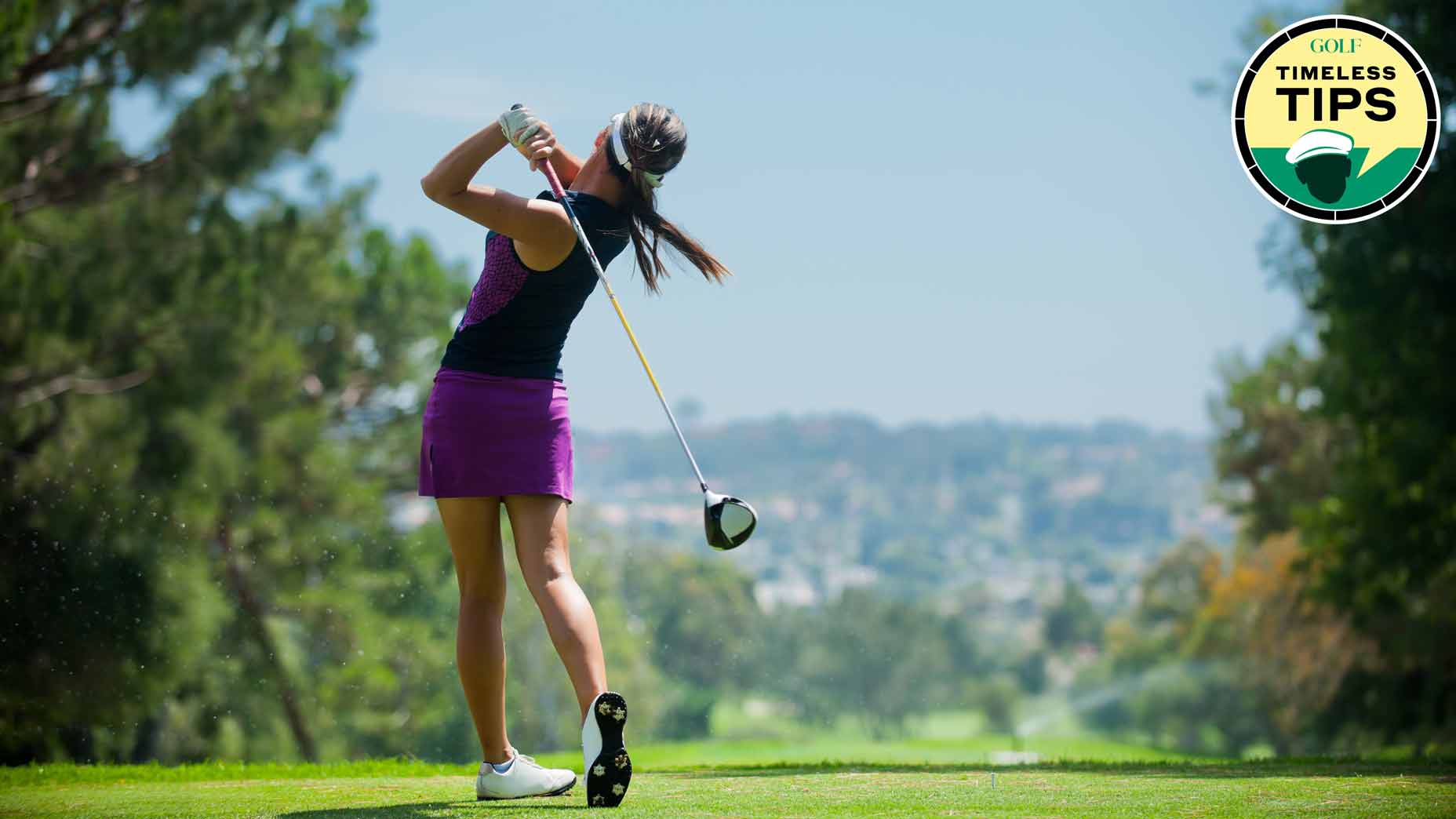
Thanks to ShotLink technology, we know exactly where you're wasting strokes — and what you need to do to lower your handicap.
Getty Images
Golf instruction is ever-evolving, but the best advice stands the test of time. In GOLF.com’s new series, Timeless Tips, we’re highlighting some of the greatest advice teachers and players have dispensed in the pages of GOLF Magazine. Today, we have four tips for lowering your handicap fast from our August 2007 issue. For unlimited access to the full GOLF Magazine digital archive, join InsideGOLF today; you’ll enjoy $140 of value for only $39.99/year.
Everyone wants to shoot lower scores on the course, but few actually know what process they should follow to do it. Taking lessons is a good first step, but not everyone has the time to dedicate to seeing a teacher on the regular. This can make developing a plan for improvement tough.
Luckily for you, that’s where we come in. Back in 2007, we enlisted the help of GOLF Hall of Fame Teacher Dave Pelz to conduct a study on amateur golfers and where they struggle. Thanks to these results, we have four areas of your game to focus on if you want to lower your handicap. Check it out below.
4 ways to lower your handicap
If you want to improve your playing skills, you have to know exactly what needs improving. It won’t help to empty a bucket of range balls with your driver when it’s your putting that’s killing your scores.
10 things recreational golfers can learn from low handicappersBy: Kellie Stenzel, Top 100 Teacher
I understood this 30 years ago, when | first began measuring the skills of the PGA Tour players worked with. This was before laser rangefinders, so I had to walk off distances before tournaments then run outside the ropes during events to chart where players hit their shots. I used these shot patterns and scores to identify weak areas and help the players turn those weaknesses into strengths. This research-based instruction formed the foundation of my teaching career and Scoring Game Schools, and today it remains a driving force within both.
Last summer, the PGA Tour offered me its ShotLink laser technology and software to study the games of amateurs. With their help, the Pelz Golf Institute staff measured every shot from more than 300 amateurs on four holes over four rounds at Arrowhead Country Club during the PGA Tour Superstore World Amateur Handicap Championship, in Myrtle Beach S.C.
This data allowed us to assess amateur skills with an accuracy never before possible. (And I didn’t have to do any running!) The purpose of our research was to compare amateur skills to those of PGA Tour players (which ShotLink measures each week) and use this data to help you assess where your game lies within that skill spectrum. Knowing this, you can accurately identify where your game needs the most work and how hard you must go at it to become a better player.
Below are four areas you should tackle to lower your handicap.
1. Improve your driving
According to our research, poor balance, direction and target selection are killing your accuracy and distance off the tee.
WHY YOUR NUMBERS ARE BAD
1. Pros don’t lose balance — or change foot position — until they complete their swing and walk away. Amateurs swing your driver so hard you fall off balance. (While the players we measured rarely did this on practice swings, it was almost the norm on real tee shots.)
2. Pros rarely swing their driver at 100 percent. You try to hit the ball as far as you can with your driver, trying to squeeze every inch possible out of your swing. (In interviews, most of the amateurs answered “as far as I can” when asked how far they expected to hit their drives. Although they usually laughed when they said this, I believe they meant it.)
3. Pros aim down the right or left sides of the fairway, anticipating that the ball will draw or fade back to the center. You have no bias in aim direction, nor do you favor a side of the tee box to compensate for your tendency to hit drives left or right of your setup alignment. (The amateurs we measured consistently teed the ball in the center of the tee box and aimed straight down the middle of the fairway.)
HOW TO MAKE THEM BETTER
1. Throttle back — Commit to “swinging within yourself” and finish in balance without moving your feet. This may mean using only 85 to 90 percent of your available power (or effort), but your results will improve because of it. Good balance is fundamental to good golf. You can’t hit drives repeatedly in the fairway without it.
2. Favor the fade — Aim left if you usually slice it. I know you don’t want to play for a slice and you’d rather taker a chance on hitting one straight (or even with a little draw), but this attitude hurts your scores. Always play the best you can with the game you brought to the course that day. If you want to eliminate your slice, work on it during practice at the range. On the course, aim down the left side and get your drives to stop in the short grass.
3. Play for accuracy — Do whatever it takes to hit the fairway, even if it means hitting a 3-wood or hybrid. If you give up 10 percent of distance for 10 percent more accuracy you’ll shoot lower scores.
2. Conquer the par-3s
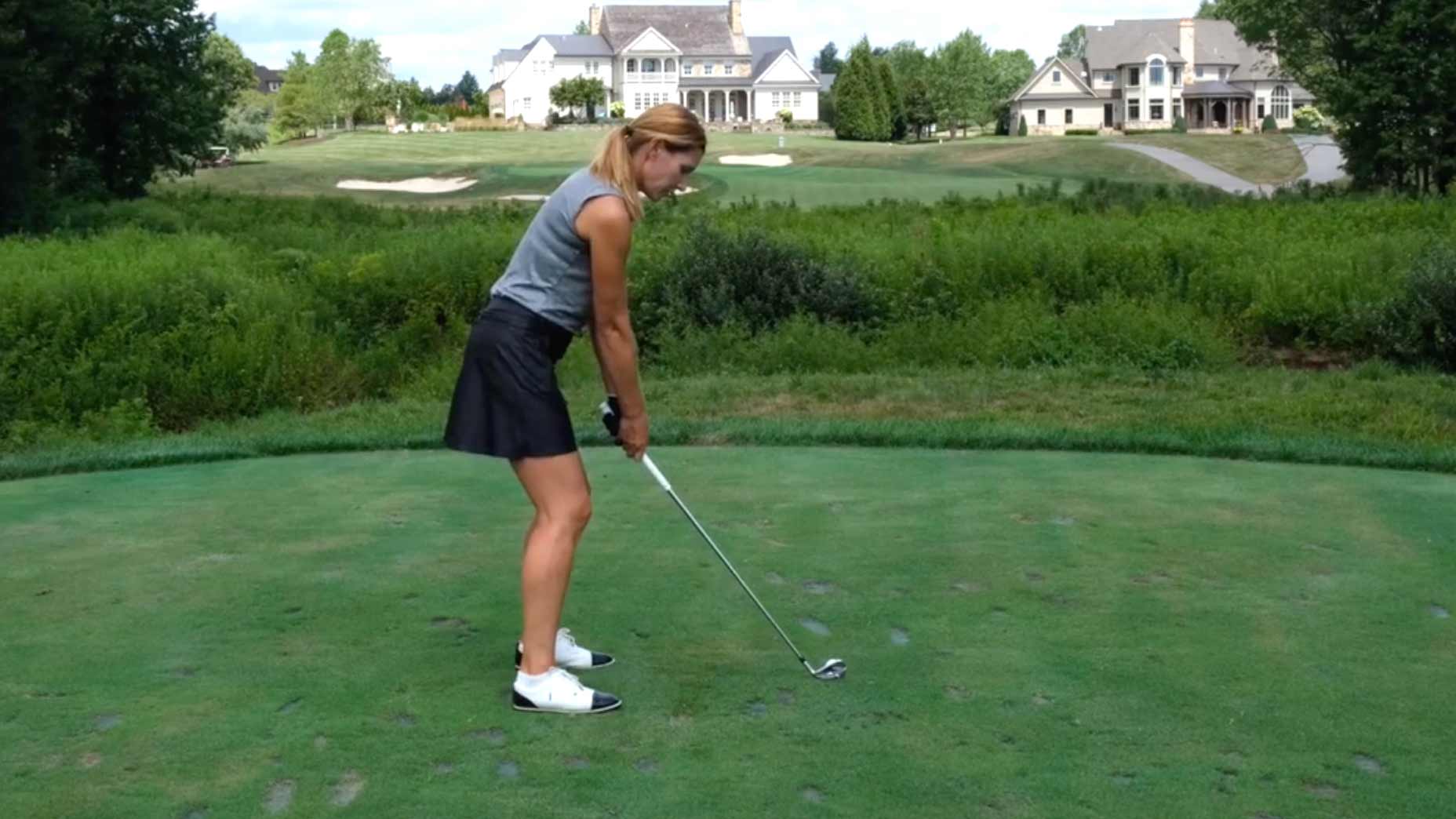
Recreational players give up tons of strokes on par-3s thanks to under-clubbing, bad contact and poor club selection.
WHY YOUR NUMBERS ARE BAD
1. Pros make contact in the center of the clubface more often, making it easier to control the distance they hit their shots. You make contact out on the toe of the clubface. As a result, variable and less than maximum energy is transferred from club to ball. (More than 90 percent of the amateurs came up short of the flagstick, no matter what club they used.)
10 ways to master par-3s, according to a Top 100 TeacherBy: Kellie Stenzel, Top 100 Teacher
2. Pros know how far they hit each club in their bag, and seldom overestimate how much distance they will generate with the club they select. You select clubs based on an expectation of hitting them almost perfectly and having the ball carry precisely to the hole. The problem is, most amateurs don’t hit perfect shots very often. (Even the amateurs who hit a solid tee shot mostly came up short of the hole.)
3. Pros calculate pin position and hazard locations when selecting their landing targets. You aim directly at the flagstick regardless of how close hazards are to the target. (Since most of the amateurs’ shots came up short, many landed in the hazard.)
HOW TO MAKE THEM BETTER
1. Cut out your cut — As you swing through the hitting zone, move your clubhead down and out toward the target. This will curb your tendency to cut across the ball and hit it on the toe. Practice this by hitting balls from three inches inside a three-footlong two-by-four piece of wood aimed exactly at your target.
2. Go long — Select the club that will get you to the back edge of the green. The ball will end up past the flagstick if you catch it pure, but no harm done since your shots are rarely straight enough for you to make the next putt anyway. Choosing a stronger club will carry your average shots closer to the hole, leave shorter putts and keep you out of hazards short of the green.
3. Know your dispersion — Study the shot patterns at right. Imagine hitting 100 balls to this par 3; which pattern would your shots fall into? From now on when you play a par 3, look for the safest area on the green for Sees your shot pattern (not your landing perfect shot) to fall into, no matter zone where the flag is.
3. Do work in the sand
Amateurs struggle from the sand thanks to poor ball position, entry point and target selection.
WHY YOUR NUMBERS ARE BAD
1. Pros play the ball forward in their stance and use an almost standard wedge swing. They open the clubface and slap the sand to get the ball out, but otherwise the mechanics of their swing are smooth and normal. You make unique, funky swings in sand. (In analyzing play at Arrowhead Country Club, we saw hard swings, vertical-V swings, reverse pivots, players falling backwards, players stopping their swing immediately after impact, etc.)
2. Pros practice making sure their club enters the sand the same distance behind the ball every time. You never hit the sand in the same place twice. Sometimes you contact the ball before sand — or hit very close behind it — and send it flying over the green. Other times you hit too far behind the ball and leave it in the hazard. (Even when they made good contact two inches behind the ball, the amateurs we measured often swung either too hard or too easy and, as a result, carried the ball too far or too short.)
HOW TO MAKE THEM BETTER
1. Play it forward — Try this: Hit a normal wedge shot from grass. Notice how your divot is forward (toward the target) of the center of your stance. This exact same swing which contacts the ball before it hits the ground on fairway shots can also serve as your sand swing. It will correctly hit two inches behind the ball in sand if you simply position the ball forward, out from the instep of your left foot.
2. Give yourself some room — Play to reasonably safe sections of the green. Look at the sand shot I’m hitting below: I need to carry the ball four steps just to get out, but if I carry it four steps past the flag it ends up in the bunker on the other side of the green. Based on ShotLink data, Tour pros should take dead aim at this flagstick because they’ll end up within about 10 feet of the hole. But if your average leave distance is longer (see handicap data, far left), you’d be wise to aim out to the right where there’s more green to work with.

4. Dial in your touch on the greens
Weekend warriors aren’t very skilled on the greens because of touch, getting line-locked and not reading enough break.
WHY YOUR NUMBERS ARE BAD
1. Pros rarely leave makeable putts (10 to 25 feet) short of the hole. You would score significantly better by not leaving so many makeable putts short. Look at the scatter patterns of second putts remaining after the firstmakeable putt is missed. This “leaving-it-short” phenomenon was surprisingly consistent across the handicap range of amateurs but almost absent for pros. (The amateurs actually did themselves proud when it came to makeable putts. Their performance almost across-the-board was closer to the pro level than in almost any other category we measured.)
2. Pros play more break and miss more putts on the high side of the hole. You almost never play enough break and leave a high percentage of missed putts below the hole. (This was very discouraging to me. I have been preaching to amateurs to play more break in putts for the last 10 years, but this new data shows no evidence of anyone having listened.)
HOW TO MAKE THEM BETTER
1. Forget the line — Too many golfers complain of pulling or pushing after missing a putt. These complaints are indicative of too much focus on line, with not enough attention paid to speed or distance. The truth is, a putt’s speed determines how much it breaks, and therefore usually controls its line (left or right) as it approaches the hole. In addition, most golfers don’t read the right line putts in the first place.
Having said this, do me — and your game — four favors this season: (1) Focus on rolling putts beyond the hole on average; (2) Allow for a little more break on every breaking putt you see; (3) Recognize that for every putt you leave short you’ve thrown away a chance of holing it; and (4) Realize that until you miss as many putts above the hole as below, you’re STILL not reading enough break on average. Do these things for me and you just may start putting like a professional.
Dave Pelz’s research
The study
Amateurs were grouped into the four categories of scratch 0(0 to 5), 10(5.1 to 15), 20(15.1 to 25), and 30 (25.1 to 35) handicappers. ShotLink fairway lasers were used to measure where tee and fairway shots started and stopped, up to within 30 yards of each green. From inside 30 yards, greenside lasers measured each shot’s location and progression into the cup. Foursomes were identified by number, with each player further identified by a colored ribbon tied to the back of his belt.
Why we did it
We hope this data will help you understand where and how much your game can improve, and make both your future lessons and practice more valuable and productive.
Latest In Instruction

Zephyr Melton
Golf.com Editor
Zephyr Melton is an assistant editor for GOLF.com where he spends his days blogging, producing and editing. Prior to joining the team at GOLF, he attended the University of Texas followed by stops with the Texas Golf Association, Team USA, the Green Bay Packers and the PGA Tour. He assists on all things instruction and covers amateur and women’s golf. He can be reached at zephyr_melton@golf.com.



